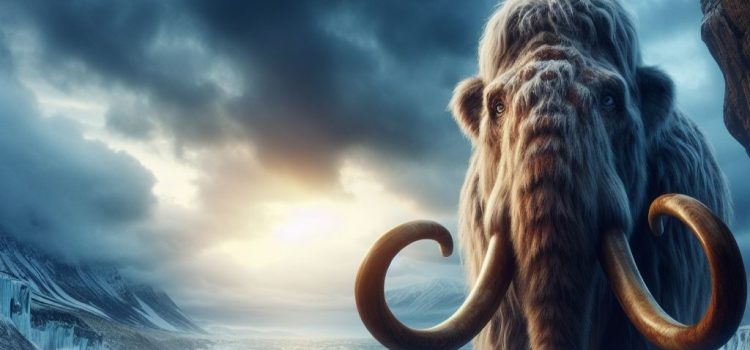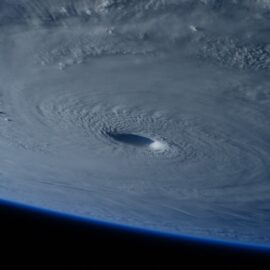
This is a free excerpt from one of Shortform’s Articles. We give you all the important information you need to know about current events and more.
Don't miss out on the whole story. Sign up for a free trial here .
What was North America like during the ice age? When did the last ice age end? Could we still be in one right now?
Our human ancestors lived through the ice age, when a third of North America was covered by ice and woolly mammoths wandered the Earth. But, believe it or not, we’re technically still living in an ice age now.
Here’s what living in an ice age is really like and what might come next for Earth’s climate.
How Did North America Look When the Earth Was Colder?
When you picture the “ice age,” you probably imagine a period of prehistory when early humans wrapped themselves in animal skins and tracked woolly mammoths across the tundra. In reality, there have been many ice ages throughout the history of the Earth. And technically, we’re still living in one. Scientists say that we’re currently in an “interglacial period,” a stretch of time with a milder climate between “glacial periods” of much colder climate, all within an ice age.
What Was Our Continent Like During the Ice Age?
The Earth’s most recent ice age began 2.6 million years ago, during the period of geologic time called the Pleistocene Epoch. Ice sheets formed over large stretches of most continents around the world. In what we now call North America, the Laurentide ice sheet began forming in eastern Canada and gradually grew larger, thicker, and heavier.
Because of their massive weight, large bodies of ice flow downhill wherever the slope of the terrain allows. While many glaciers tend to move in one direction, ice sheets (which are particularly massive glaciers) flow outward in all directions from their center. Over time, the Laurentide ice sheet descended south, merging with other ice caps (or miniature ice sheets) that formed in Canada and the US as the earth cooled. At its largest, the ice sheet covered more than 5 million square miles and extended as far south as New York City. In some places, like Chicago, the ice reached a thickness of 8,000 to 10,000 feet: almost 2 miles.
At the height of the most recent glacial period, the Earth’s climate was much drier than it is today. Sea levels were considerably lower, since much of the Earth’s water was frozen into ice sheets. Steppes, or grassy plains, were a common feature of the North American landscape, and trees slowly retreated south. At the time, the continent was populated by large animals called “megafauna.”
Why Did the Earth Warm Up Again?
While North America is no longer covered by a gargantuan ice sheet, scientists say that the ice age hasn’t actually ended. They define an ice age as a period when the temperatures are colder than usual for the Earth. But the climate doesn’t stay uniformly cold throughout an ice age. Instead, the earth warms and cools in cycles of 20,000 to 100,000 years, determined partly by predictable changes in Earth’s orbit and rotation.
Scientists believe these changes occur on overlapping intervals of 20,000, 40,000, and 100,000 years. That’s why an ice age occurs every 100,000 years. Some experts think that human-caused climate change might have already altered the cycle. Additionally, interglacial periods last just a few thousand years. So the Earth might be due to begin cooling again in the next several thousand years—though our fossil fuel burning might stave off the start of the next glacial period for a while.
How Did the Ice Age Shape the Landscape?
Because the climate fluctuates during an ice age, gargantuan glaciers advance and retreat, reshaping the underlying landscape as they increase and decrease in size and extent. As it moved, the Laurentide ice sheet carved out lakes and plains.
Additionally, as glaciers travel, they pick up rocks and sediment and carry them for long distances; then, these rocky deposits get left behind when the ice melts. What was once the location of the Laurentide ice sheet’s southern edge is now marked by what scientists call a “terminal moraine”: a ridge of rocky debris that extends for thousands of miles across the US, from Puget Sound to Montauk Point.
This glacial ridge is less prominent in some places and more obvious in others. For instance, it’s particularly visible in New York City, where the ice sheet reached two miles in thickness and became so heavy that it depressed the bedrock. (Scientists say that the land surface is still rebounding from the weight of the ice.)
How Did Humans Survive the Ice Age?
Many experts believe that humans first arrived in North America about 20,000 years ago, or perhaps as early as 26,000 years ago. If that’s the case, their arrival would have preceded or coincided with the last glacial maximum, the coldest part of the glacial period. However, some archaeologists make the controversial argument that the ancestors of the indigenous peoples of North America may have arrived many tens of thousands of years ago, or even as early as 130,000 years ago.
Researchers aren’t entirely sure why our species survived the last glacial period while other hominins (like the Neanderthals) did not. But they think early humans’ use of tools to modify their environment and their ability to build complex social communities played a role. While other species of hominins also had these ancestral skills, early humans likely had developed more advanced language and a stronger sense of social identity. These social abilities helped them band together to survive in times of crisis.

Want to fast-track your learning? With Shortform, you’ll gain insights you won't find anywhere else .
Here's what you’ll get when you sign up for Shortform :
- Complicated ideas explained in simple and concise ways
- Smart analysis that connects what you’re reading to other key concepts
- Writing with zero fluff because we know how important your time is







I to believe that the last ice age is still receding. I also agree that the human race is likely contributing to warming of the earth by burning fossil fuels. I do not believe that livestock are contributing to the warming with methane gases. If that was, what about the millions of humans that pass gas every day. Mother Nature is still rolling on and I don’t believe we should be trying to alter it. Life will continue on this world, with or without us. So long as we don’t blow it up first.